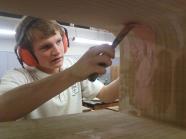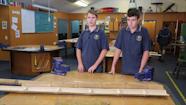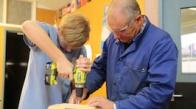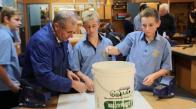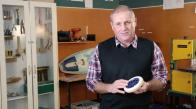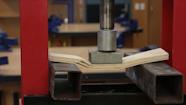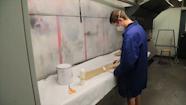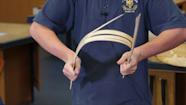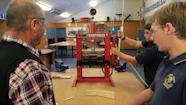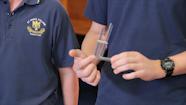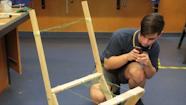Year 13 student outcome: Bathroom cabinet
This resource gives an example of a stellar student outcome and describes key aspects of the project and assessment opportunities.
George's outcome | Construction techniques | Fitness for purpose | Assessment opportunities
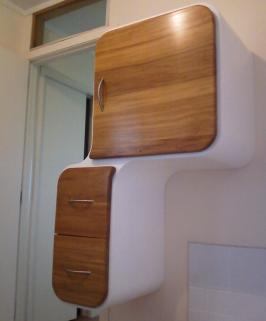 George's outcome
George's outcome

In year 13 students find their own context and issue for their technology projects.
In George's house, the storage area in the bathroom was wearing out. It was delaminating with moisture and was out of place in their new home. This provided the context and issue for his project – a new bathroom cabinet.
Construction techniques
 Bending techniques
Bending techniques

George carried out extensive research and testing to find a method of creating the curved shape for the cabinet. He explored lamination, steam bending, kerf bending, using a lathe CNC cutter, and using a router copy cutter.
Construction
To create the outer shell of the cabinet, George made a template from custom wood of each piece. He laid the router and copy cutter on top of each other and used the templates to cut the 24 components from 18mm custom wood. Then he laminated the components and sanded and filled the surface over a period of several weeks to ensure a smooth finish for the surface.
This photographic diary illustrates the construction process George followed to create the cabinet.
Bathroom cabinet: Photographic diary 1 (PDF, 7 MB)
Bathroom cabinet: Photographic diary 2 (PDF, 3 MB)
An additional requirement was that the cabinet needed to include something of relevance to George's parents. The cupboard and drawer front was made from recycled rimu from an old local post office.
Fitness for purpose in its broadest sense – some points to note
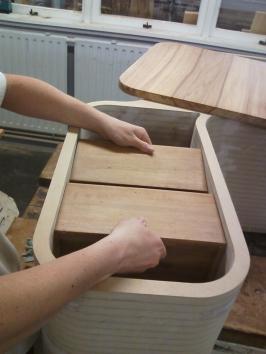
Health and safety
The cabinet was securely bolted to the wall with coach bolts. The drawer runners included a locking mechanism that prevented the drawers from falling out during regular use. George used earmuffs and a facemask during the extensive periods of sanding during the project.
Sustainability
Waste left over from the laminating process for the outer shell was reused by other classes and projects. The drawer and cupboard fronts were made from recycled rimu. The drawers themselves were recycled from the old cabinet.

